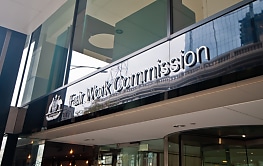
The government has officially revealed the 2024–25 federal budget. Here is a recap of the most pressing points concerning HR leaders.
Cost of living
All 13.6 million Australian taxpayers will get a tax cut, with an average tax cut of $1,888 or $36 a week, from 1 July 2024.
Meanwhile, $3 billion in student debt for more than 3 million Australians will be waived. There will be a maintained $5,000 in support payments to apprentices in priority occupations for another 12 months to 1 July 2025. Employers of these apprentices will receive a $5,000 hiring incentive. Hopefully, these initiatives can help ease trade shortages.
Further, $41.2 million in targeted support for JobSeeker Payment recipients with additional barriers to work was included. Support will be boosted for Australians facing acute and urgent financial pressures with $138 million to meet sustained high demand for crisis support, including emergency relief, food relief and financial support services.
Education/Future skills
To help reduce the persistent skills shortages experienced across the country, a variety of initiatives are being introduced, such as:
- $10,000 apprentice incentive payment for clean energy sector apprenticeships.
- $1.1 billion to reform higher education.
- $88.8 million for 20,000 new training places relevant to construction.
- $55.6 million to support women’s careers in clean energy.
The focus on getting women into clean energy is a welcome sight. However, there is a missed opportunity to shine light on the lack of women in trades.
“There is a concern among employers in male-dominated skilled trade industries about investing in female apprentices in case they don’t return after parental leave. There is also concern about how to cover time while female tradespeople are on parental leave. While these are valid concerns, it highlights a deeper issue of retention and the urgent need for supportive practices to keep skilled women in the industry,” said Hacia Atherton, founder and chief executive of Empowered Women in Trades.
“Diversity within the workforce is essential, especially in male-dominated industries. When we cultivate an inclusive and innovative work culture that appreciates all contributions, we start to dismantle biases and create environments where everyone can thrive.”
However, the focus on tertiary education will see an investment in urgent skills needed. The government is providing over $500 million for skills and training in priority industries and to support women’s participation in these sectors. Meanwhile, the establishment of the $100 million Outcomes Fund aims to support place-based strategies in skills and employment.
Migrant workers also saw attention, with $1.8 million set aside to streamline skills assessments for around 1,900 migrants from comparable countries to work in Australia’s housing construction industry, hopefully reducing the trade shortages and easing the housing crisis.
Small business
Small businesses saw some welcome initiatives, with $290 million pledged to extend the $20,000 instant asset write-off for small businesses. Furthermore, $10.8 million was allocated to deliver tailored, free, and confidential financial and mental wellbeing supports for small-business owners.
Another $3.5 billion of energy bill relief was included, with rebates of $325 to around 1 million small businesses. For remote areas, $777.4 million was assigned to develop local jobs, services, and economic opportunities.
Equality
Supporting gender equality was top of mind, and the government noted a $925.2 million in funding for victim-survivors leaving violent intimate partner relationships.
In the workplace, $1.1 billion was allocated to pay superannuation on government-funded paid parental leave, affecting a reported 180,000 families each year.
Sally Bruce, chief operating officer at Culture Amp and non-executive director at Chief Executive Women, said: “We welcome the new paid superannuation on parental leave measure announced in the budget tonight.”
“This measure will also help increase women’s economic participation in the workforce to drive a stronger economy and encourage both men and women to take the time required to go on parental leave and return to work. Women’s workforce participation rates are shockingly behind, and this is both our biggest underutilised asset and our biggest opportunity.”
Many were happy to see the inclusion of parental leave reform. Atherton commented further, saying: “The extended paid parental leave scheme is a significant advancement in financially empowering mothers and mitigating career setbacks often associated with motherhood. Not only is this initiative important for supporting women, it symbolises broader push towards recognising and valuing caregiving in our society.”
She continued: “Providing paid parental leave to both parents can revolutionise workplace dynamics, encouraging shared caregiving responsibilities. It’s essential for employers to foster flexible, supportive work environments, not only to retain but also to attract diverse talent, which ultimately benefits the industry as a whole.”
Wages
Students will see increased financial support, with around 73,000 receiving $319.50 per week while undertaking mandatory placements.
Meanwhile, the government will support wages growth through submissions to the Fair Work Commission by providing pay rises for care sector workers. This announcement builds upon the $11.3 billion already allocated for the interim 15 per cent increase. The Fair Work Commission processes are currently underway, and details will be finalised at a later date.
There will also be $1.8 billion provided to support additional frontline staff and put towards increased aged care and early childhood education and care wages.
Transport
Upgrades to both roads and rail should make things easier for commuters, with the government committing to $9.5 billion over the forward estimates and $16.5 billion over 10 years for transport infrastructure. This is all part of a $120 billion, 10-year infrastructure investment pipeline.
Health
There will be a $888.1 million investment in mental health support and $2.2 billion to improve aged care.
Another $468.7 million will be allocated to support people with disability and get the NDIS back on track, and $227.6 million for a new specialised disability employment program to support around 270,000 people with disability to prepare for and find work.
However, money may not be enough to throw at this issue, and thoughtful action may be required, said Cristina de Moraes Leme, IGY6 Foundation chief executive.
“While Mr. Chalmers acknowledged that people are under pressure and suggested a focus on wages policies and tax cuts as a solution, the challenges don’t stop there. NDIS participants, in particular, face additional hurdles. Beyond economic pressures, they need dedicated support to manage their psychosocial disabilities to manage day to day. It’s crucial that our policies also prioritise the unique needs of these individuals to truly support their ability not just survive, but to thrive,” said de Moraes Leme.
“With so many households including someone with a psychosocial disability, it’s evident that money alone is not enough. How does the government expect a society to continue to be productive, while the focus is on rational factors and not emotional?”
Cyber security
The government is providing $314.1 million over two years to strengthen safety and security at Services Australia centres in the hopes of improving cyber security.
Another $187.4 million is being provided to protect taxpayer data against fraudulent attacks on the tax and superannuation systems, reducing the risk of cyber crime.
Jack Campbell
Jack is the editor at HR Leader.










